Background to LTPs
In April 2025, Transport Secretary Heidi Alexander re-confirmed plans, originally announced by the previous Government, to revive the Local Transport Plan (LTP) process, with updated guidance on preparing LTPs to be issued later in 2025. This could be a crucial opportunity for the Department for Transport (DfT) to set out what local transport authorities outside London (i.e. county councils, non-metropolitan unitary authorities, and the combined authorities and combined county authorities which cover England’s main conurbations and which have been forming in other areas in recent years) need to do to support the vision of DfT’s Integrated National Transport Strategy, which is also due for publication later in 2025.
The LTP system was established in 1999/2000, under powers set out in the Transport Act 2000. It required local transport authorities in England to set out a long-term vision for transport in their area, together with a multi-year programme of local transport improvements. The Department for Transport (DfT) would then allocate multi-year (initially 5-year) funding settlements to each authority, depending on the quality of its LTP.
However the system fell into neglect after 2010, when DfT announced that local authorities were free to submit LTPs whenever they wished to (rather than on a fixed 5-year cycle), and that their funding settlements would no longer depend on these. DfT has not updated its guidance on LTPs since 2009. Instead, councils have been forced to seek funding, often through competitive bidding processes, from short-term funding streams such as the Future High Streets Fund, Housing Infrastructure Fund or Transforming Cities Fund. This did not give councils the long-term certainty they need to develop coherent local transport plans and scheme programmes.
So the last Government’s announcement (in its 2021 Transport Decarbonisation Plan) that it planned to revive the LTP process was widely welcomed by environmental campaigners and local authorities alike. Although it later abandoned that commitment, the current Government now says it plans to issue guidance on LTPs and QCRs later in 2025.
The Government’s 2025 Spending Review has increased the proportion of transport funding English local transport authorities will receive over the four years 2025/6 to 2029/30, to spend as they choose. It includes:
- £8bn of Transport for City Regions (TCR) funding for the 9 city regions with combined authorities – the amount in 2029/30 will be double the amount in 2024/5 in real terms (n.b. a further £7.6bn of TCR funding has also been allocated for the following two years);
- £2.3bn of Local Transport Grant (LTG) funding for England’s other local transport authorities outside London – this funding will quadruple between 2024/5 and 2029/30;
- £2bn for London.
With these sorts of funding increases, Low Traffic Future believes it is crucial that DfT’s LTP guidance clearly specifies the outcomes it expects local transport authorities to achieve with this funding, e.g. decarbonising transport, as well as improving air quality, public health, road safety, accessibility and the range of travel options available, particularly for children, young people and others who cannot drive for whatever reason.

"Crucially, DfT will once again use the quality of an authority’s LTP as the main mechanism for deciding what funding it allocates to each authority for local transport improvements."

"Crucially, DfT will once again use the quality of an authority’s LTP as the main mechanism for deciding what funding it allocates to each authority for local transport improvements."
Background to LTPs
In April 2025, Transport Secretary Heidi Alexander re-confirmed plans, originally announced by the previous Government, to revive the Local Transport Plan (LTP) process, with updated guidance on preparing LTPs to be issued later in 2025. This could be a crucial opportunity for the Department for Transport (DfT) to set out what local transport authorities outside London (i.e. county councils, non-metropolitan unitary authorities, and the combined authorities and combined county authorities which cover England’s main conurbations and which have been forming in other areas in recent years) need to do to support the vision of DfT’s Integrated National Transport Strategy, which is also due for publication later in 2025.
The LTP system was established in 1999/2000, under powers set out in the Transport Act 2000. It required local transport authorities in England to set out a long-term vision for transport in their area, together with a multi-year programme of local transport improvements. The Department for Transport (DfT) would then allocate multi-year (initially 5-year) funding settlements to each authority, depending on the quality of its LTP.
However the system fell into neglect after 2010, when DfT announced that local authorities were free to submit LTPs whenever they wished to (rather than on a fixed 5-year cycle), and that their funding settlements would no longer depend on these. DfT has not updated its guidance on LTPs since 2009. Instead, councils have been forced to seek funding, often through competitive bidding processes, from short-term funding streams such as the Future High Streets Fund, Housing Infrastructure Fund or Transforming Cities Fund. This did not give councils the long-term certainty they need to develop coherent local transport plans and scheme programmes.
So the last Government’s announcement (in its 2021 Transport Decarbonisation Plan) that it planned to revive the LTP process was widely welcomed by environmental campaigners and local authorities alike. Although it later abandoned that commitment, the current Government now says it plans to issue guidance on LTPs and QCRs later in 2025.
The Government’s 2025 Spending Review has increased the proportion of transport funding English local transport authorities will receive over the four years 2025/6 to 2029/30, to spend as they choose. It includes:
- £8bn of Transport for City Regions (TCR) funding for the 9 city regions with combined authorities – the amount in 2029/30 will be double the amount in 2024/5 in real terms (n.b. a further £7.6bn of TCR funding has also been allocated for the following two years);
- £2.3bn of Local Transport Grant (LTG) funding for England’s other local transport authorities outside London – this funding will quadruple between 2024/5 and 2029/30;
- £2bn for London.
With these sorts of funding increases, Low Traffic Future believes it is crucial that DfT’s LTP guidance clearly specifies the outcomes it expects local transport authorities to achieve with this funding, e.g. decarbonising transport, as well as improving air quality, public health, road safety, accessibility and the range of travel options available, particularly for children, young people and others who cannot drive for whatever reason.





